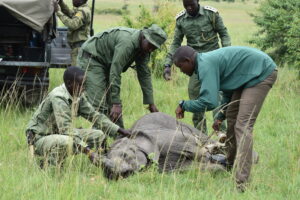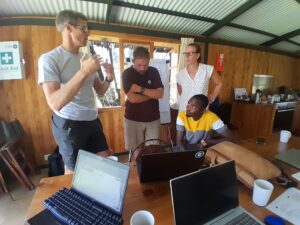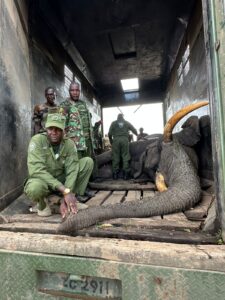It’s with great pleasure Mara Elephant Project would like to announce that our organization is once again operating the only helicopter dedicated to wildlife in the Mara thanks to the support of Karen Blixen Camp Trust (KBCT). The KBCT helicopter not only has an updated look but also an updated tail number 5Y-MEP to directly reflect our organization.
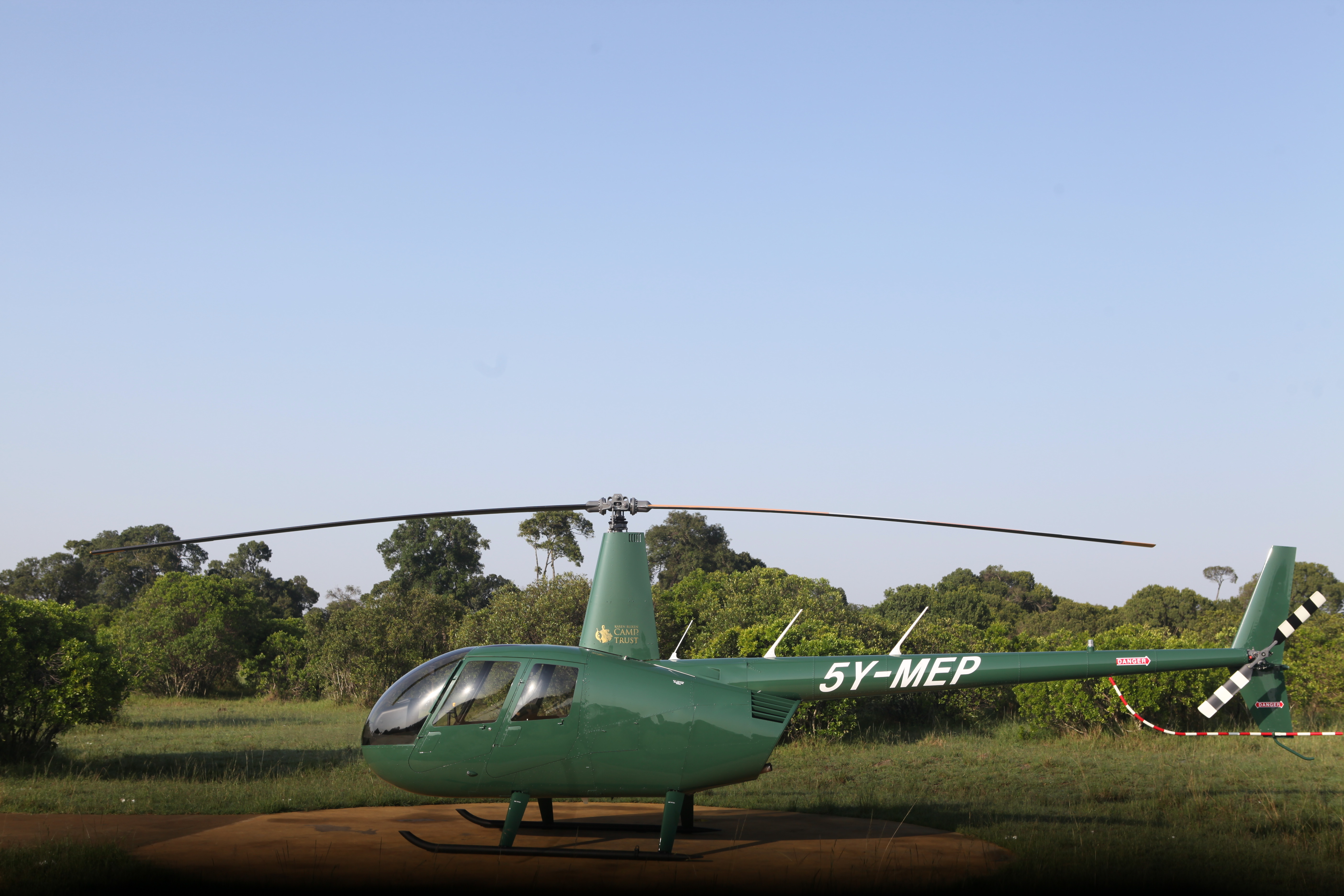
The 5Y-MEP Robinson R44 helicopter photographed at MEP HQ.
As an essential part of the human-elephant conflict toolkit, the KBCT helicopter enables us to respond rapidly to human-elephant conflict. It works extremely well when used alongside our rangers on the ground, who are our first line of defense. It also has the advantage of increasing the rapid response time, when the terrain is difficult, and expanding our operational area thanks to the helicopter’s ability to traverse a large area in a short period of time. Since 2015, over 145 hours of the helicopter flying time has been used in mitigation efforts.

The KBCT helicopter being used in the field in July.
In 2018, of the 203 human-elephant conflict incidents MEP responded to, we flew the helicopter 23.70 hours to mitigate HEC situations. One such incident in October found a herd of elephants trying to cross the Mara River into Mara North Conservancy as an angry mob was attacking them with spears and arrows. The helicopter was instrumental in protecting the herd from the crowd and guiding them to safety. We can confidently say that the helicopter directly saved this herd from being killed by the community. After safely bringing them back across the river the Kenya Wildlife Service (KWS) veterinarian pulled 20 arrows out of three elephants. In 2018, HEC elephant deaths remained steady at 12 despite the 203 HEC incidents we responded to and the helicopter played an essential part in keeping this number low.
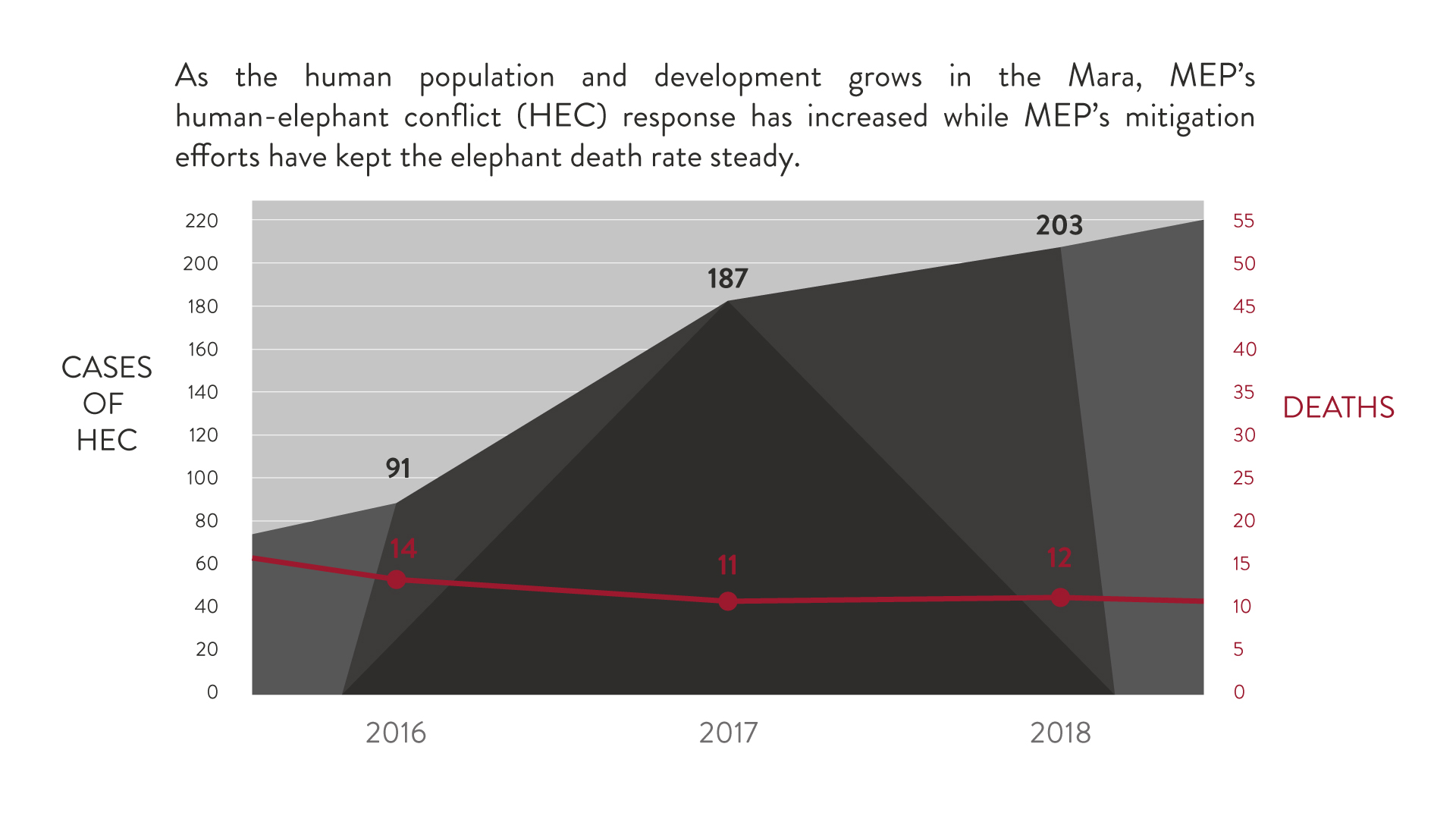
Since MEP has the only operating helicopter dedicated to wildlife in the Mara, this tool has become essential not only for us, but for our partners, like KWS. KWS Vet Dr. Limo from the Sheldrick Wildlife Trust Mara Mobile Vet Unit performs most elephant treatments in the Mara and MEP provides both aerial and ground support to Dr. Limo’s team ensuring the elephant treatment is safe for personnel and the animal being treated. Additionally, locating an injured elephant from the air improves response time to treat the injured elephant and can often spot an injury in otherwise impossible circumstances like thick vegetation. The MEP helicopter ensures that we are saving more elephants faster.
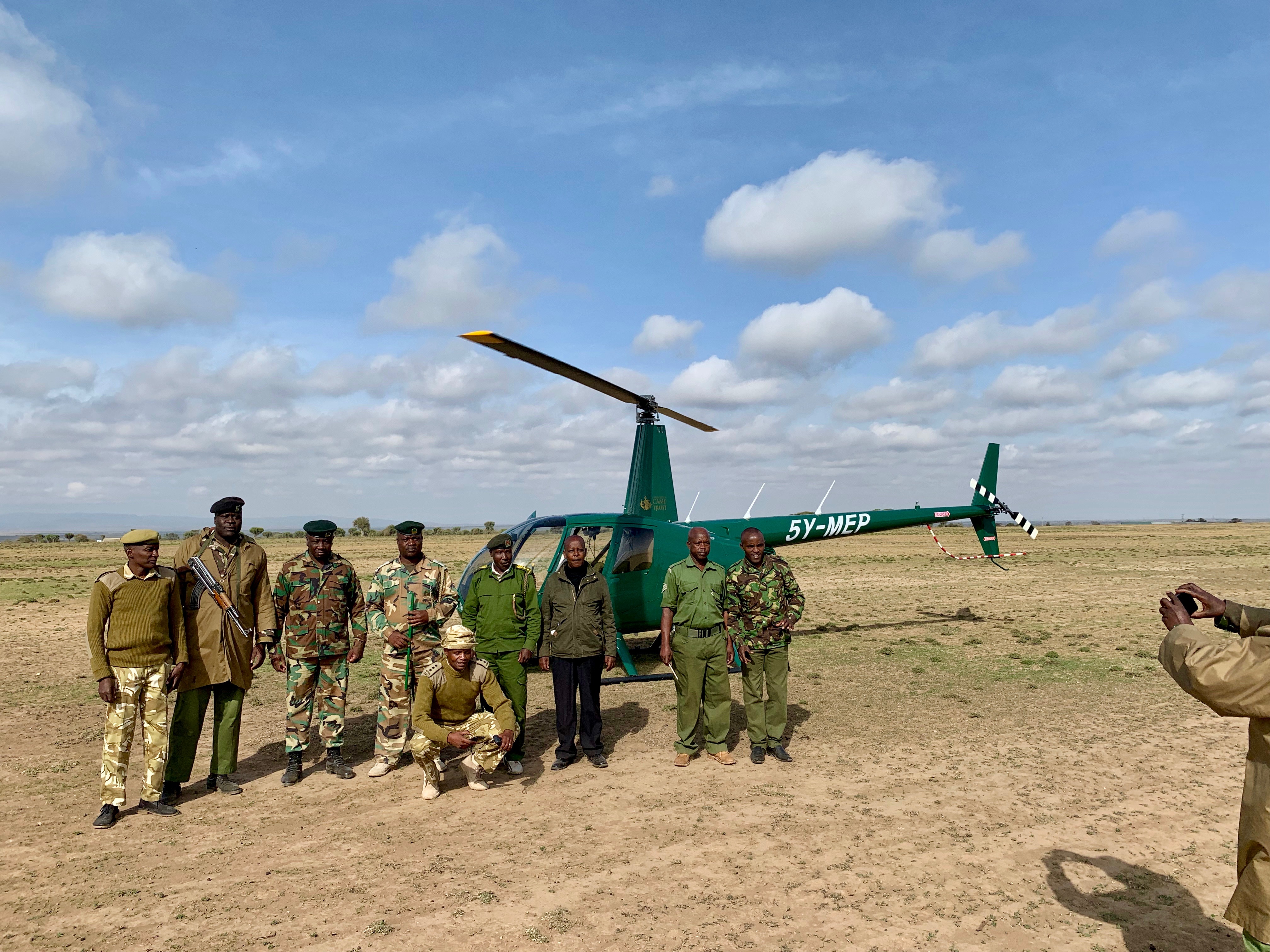
Operational partners posing for a photo in front of the helicopter.
MEP’s helicopter is not only used for elephants, but also for assistance with other wildlife living in the Mara. The helicopter has been used to gather information on the critically endangered mountain bongo antelope living in the Mau Forest, it’s been used to assist with treatments of lions, giraffes, buffalo and rhino as well as to investigate the cause of death of various other wildlife and to complete well-being checks in the endangered black rhino.
It is also an essential element to the MEP elephant collaring operations ensuring both our personnel and the elephant are safe while deploying the collar. MEP monitors elephants in real-time by deploying satellite-enabled GPS tracking collars onto elephants. Collared elephants provide data that is being used daily to mitigate human-elephant conflict, inform ranger deployment and anti-poaching work, and promote transboundary cooperation within the wider ecosystem. MEP has adopted the advanced EarthRanger tracking platform to collate and visualize the data streams from elephants. The software runs real-time monitoring algorithms that can detect when an elephant becomes immobile, breaches a geo-fence, or starts to move slowly that could indicate an injury or illness and which MEP reacts to at a moment’s notice.Using these tracking data, MEP generates monthly tracking reports and density and movement maps to better understand the patterns and behavior of these tracked animals. Each day coordinates are sent to ground patrols who use these to check on the elephants. Depending on the satellite image quality, it is possible to see settlements near the collared elephant. This information is used to anticipate possible human-elephant conflict incidents and intervene before they occur. Through the aerial monitoring program, we have identified the collared elephants represent between 400 and 600 elephants. The tracking collars, the monthly monitoring and the analytics and database system are critical components of MEP’s operations. The continued aerial monitoring of collared elephants is also critical for their well-being.

Elephants being aerially monitored in the Mau Forest using the helicopter.
The KBCT helicopter ensures that we are saving more elephants faster. The helicopter continues to be an invaluable tool in supporting ranger units on the ground and increasing our area of operation while decreasing our rapid response time. In 2018, the MEP helicopter flew for 249.40 total hours. The helicopter has been used in both the Mau Forest and Loita Hills to ensure ranger safety, root out poachers, reconnaissance, mitigate human-elephant conflict and ensure safe collaring operations in densely forested conditions.It is one tool for our organization that simply cannot be classified in a category and is so vital it covers every single aspect of our organization’s operations.

The helicopter landing in rough terrain, making it more accessible for MEP staff.
It costs $400 an hour to keep the helicopter in the air, including fuel and maintenance, and we need to fly, on average, 30 hours a month. A critical need for MEP is supplementing a year’s worth of flying time for the helicopter at $144,000. This support would ensure that a vital part of our operations is funded to protect elephants, other wildlife and local communities across the Mara ecosystem in 2019. It must be said that the use of this helicopter would not be possible without Karen Blixen Camp Trust’s support and their contribution to our organization makes a direct impact on saving the wildlife, communities and habitat of the Mara.
